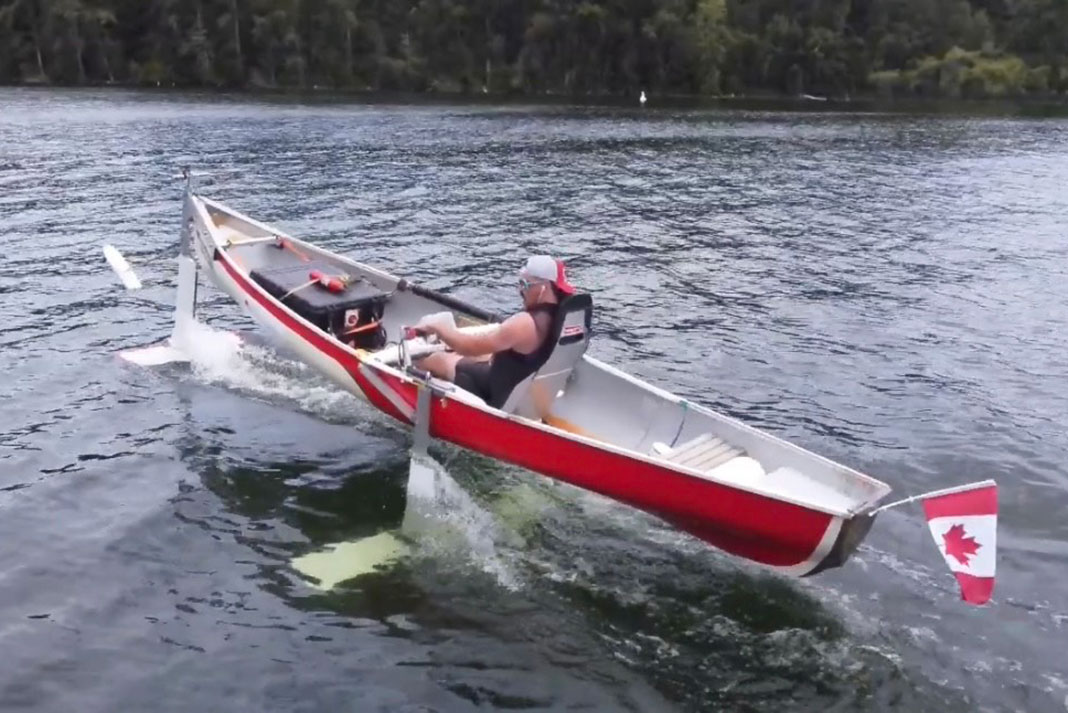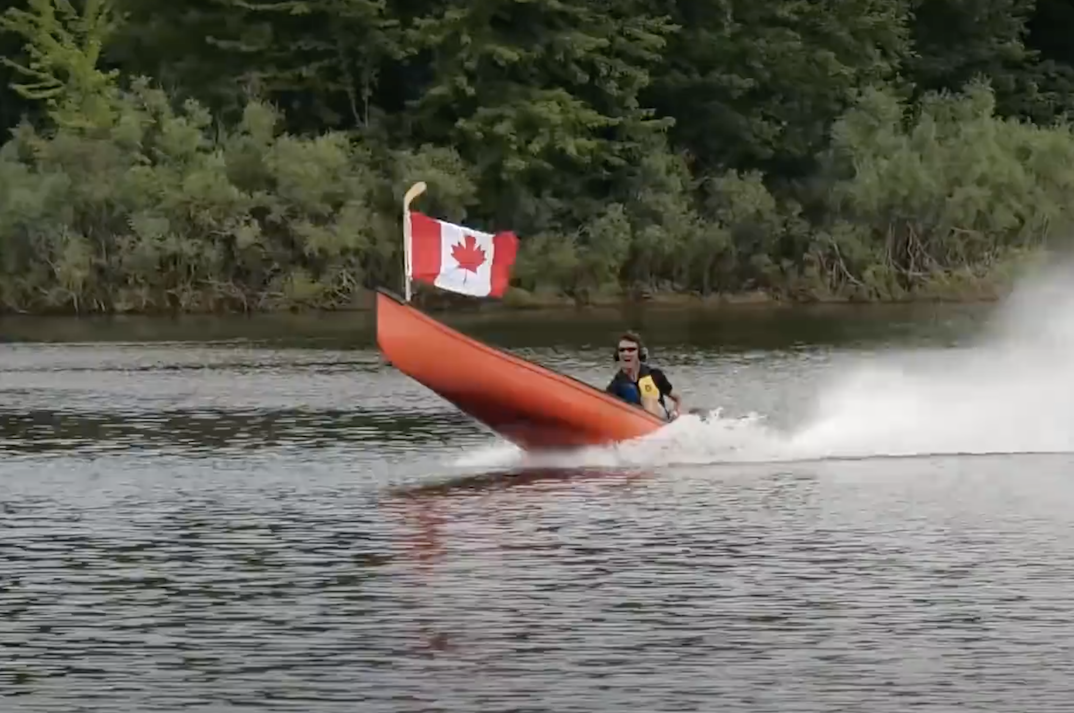Sometimes, procrastination is the mother of invention. Just ask Dermot MacDougall. The mechanical engineering technology student at Camosun College in Victoria, British Columbia, was avoiding thinking about his upcoming exams while listening to the 1986 hit song “Danger Zone” by Kenny Loggins. You might remember it as the theme song in the original Top Gun film. As MacDougall’s mind wandered, an idea struck him: What if I could make my canoe fly?
Watch the world’s first flying canoe take off
Marrying his two passions of aviation and boating, he went home and made sketches of a canoe with hydrofoil wings. MacDougall had recently purchased a well-loved 18.5-foot fiberglass canoe for $75. Boats and boards are increasingly utilizing hydrofoils, but no one had yet put hydrofoils on a canoe, he thought.
In need of a capstone engineering project for his following term at college, he pitched the flying canoe idea to the faculty. “My first and second submissions lacked important details, so our professor sent me back to the drawing board twice before giving the project a green light,” he says.

MacDougall and his classmates worked tirelessly to bring the invention from idea to reality over four months. The design had three masts projecting into the water to hold the central and front hydrofoil wings in place. Two 6,000-watt electric motors, powered by three deep-cycle marine batteries, would give the canoe the power for lift off. Foot pedals controlled the forward mast rudders.
The flying canoe was a team effort and included classmates Trevor Stothard, Victoria Contreras, Fatima Alsoufi and Griffin Adams. Adams coined the canoe’s name, Millennium Phoenix, as a nod to the Star Wars spaceship and mythical bird that rose from ashes.
Millenium Phoenix makes its maiden flight
After months of revisions and redesign, MacDougall’s team and professors, Jeffrey Stevens and Richard Burman, launched the 750-pound canoe on Elk Lake. MacDougall piloted the vessel, feeling the weight of so much resting on this day. He nervously pressed the button to control the motors.
“I got jolted back, and everything was shaking as I gained speed. Water was lapping at the hull, and then it got dead quiet,” MacDougall said. “I heard my team cheering from another boat, and my professor’s voice came through my headset saying the words I’d been hoping for: Dry hull! The feeling of flying something I’d invented was surreal. I was about one foot out of the water, looking down at people in the safety boats. It was the best day of my life.”
“I got jolted back, and everything was shaking as I gained speed. Water was lapping at the hull, and then it got dead quiet.”
The Millennium Phoenix flew 10 times before eventually taking up residence in MacDougall’s driveway. It won the team bragging rights for the year’s best capstone project, literally soaring above the competition.
As for MacDougall, once he completes his diploma in mechanical engineering at Camosun, he may seek funders to refine the design and commercialize it before proceeding to university for an engineering degree. He also wants to get his pilot’s license and has started concept drawings for an ultralight plane he hopes to pilot.
College project takes flight. Literally. | Feature photo: Dermot MacDougall





 This article was first published in the Spring 2024 issue of Paddling Magazine.
This article was first published in the Spring 2024 issue of Paddling Magazine. 